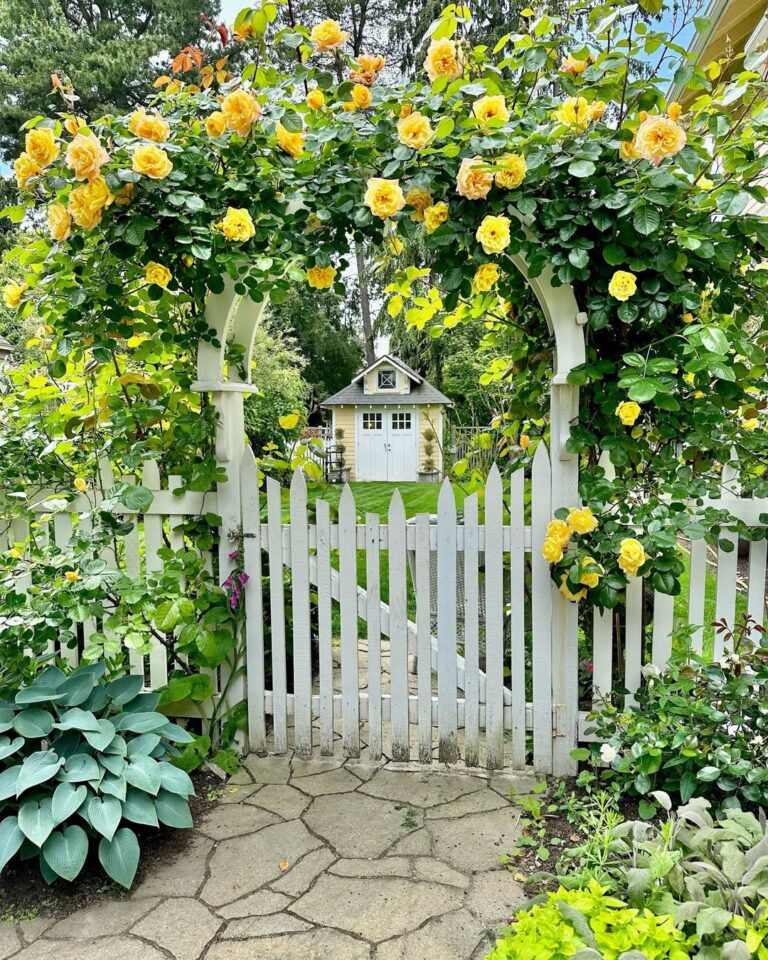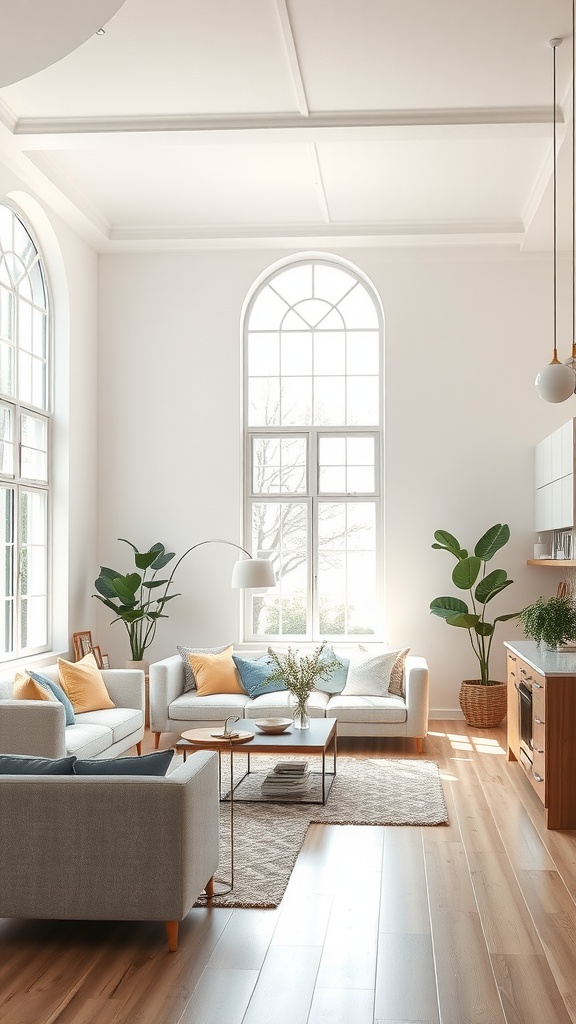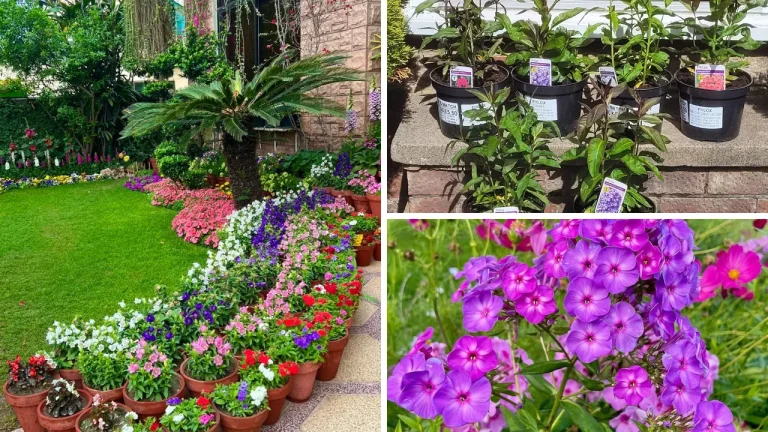17 Garden Pathway Ideas to Elevate Your Outdoor Space
Creating the perfect garden pathway not only enhances the aesthetic of your outdoor space but also provides functional benefits like guiding visitors through your garden or protecting your lawn from foot traffic. Whether you prefer a modern, rustic, or natural look, there are countless ways to design a pathway that fits your unique style. Here are 17 creative garden pathway ideas that will inspire you to transform your outdoor space into something special.
1. Gravel Pathway with Border
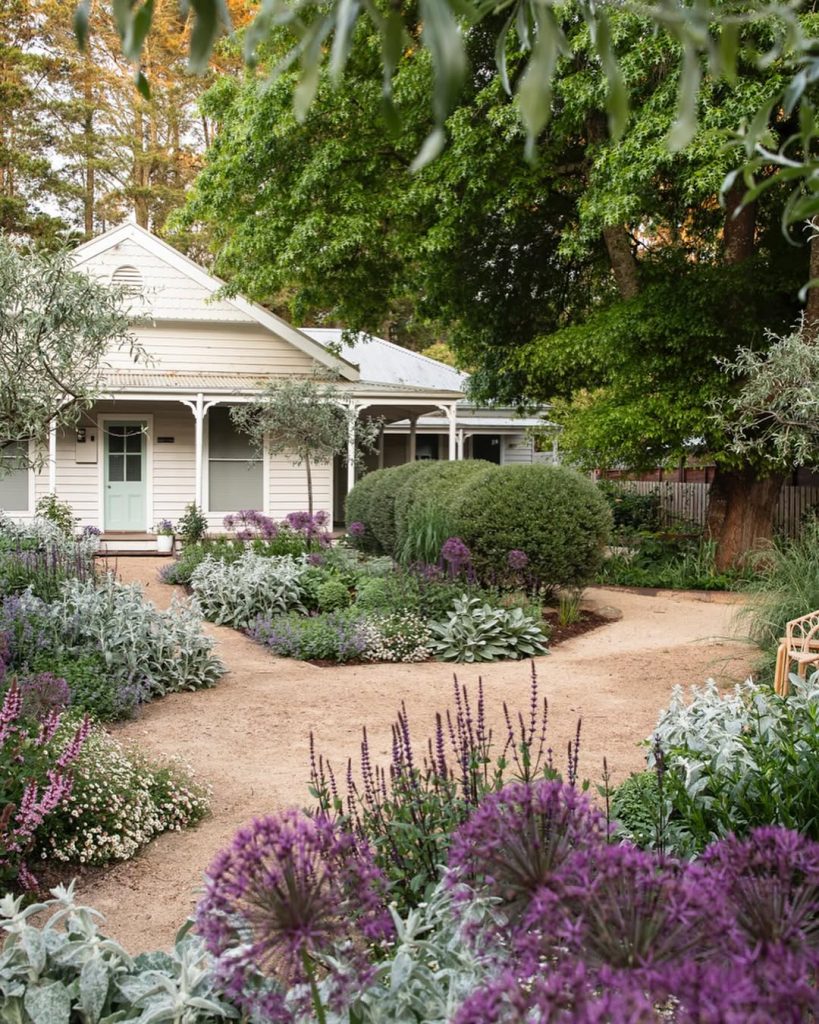
A classic choice for garden pathways, a gravel pathway is both practical and attractive. It allows for excellent drainage, reducing the risk of water pooling in your garden. You can line the edges with stone, brick, or even wood to give the path a defined structure. The flexibility of gravel makes it easy to create a natural, winding path that complements any garden style, from traditional to contemporary.
Gravel paths are easy to install, requiring just a base layer of crushed stone or gravel and a layer of fabric underneath to prevent weed growth. For a clean look, consider using larger stones to create a raised border, which can add a touch of elegance while keeping the gravel contained. You can also experiment with different gravel colors to create a unique look that ties in with the rest of your landscaping.
2. Flagstone Pathway
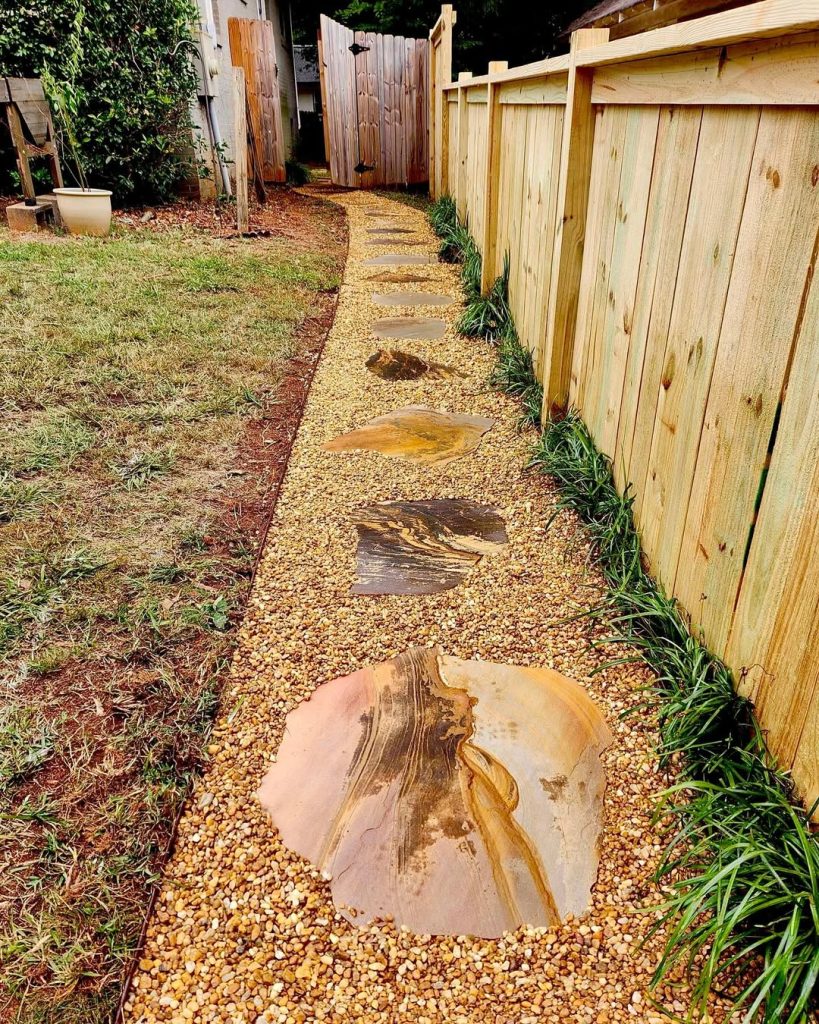
Flagstone is a beautiful, natural material that brings an earthy feel to any garden. Whether you’re creating a formal path or a more relaxed, meandering walkway, flagstone offers versatility and timeless appeal. The irregular shape and texture of flagstones give the pathway a rustic charm while still providing a durable surface to walk on.
To install a flagstone pathway, you can either lay the stones directly on the soil or use sand or mortar for added stability. Keep the gaps between the stones narrow, or plant ground cover like creeping thyme between them to soften the look. Flagstone works beautifully in gardens of all sizes and styles, making it an ideal choice for any backyard.
3. Brick Pathway with Herringbone Pattern
:strip_icc():format(webp)/102668962-25ccbef791dd412f9aee53f99cab4e12.jpg)
For a more structured, refined look, consider laying bricks in a herringbone pattern. This design adds sophistication to any garden while still being functional. The herringbone pattern is not only visually appealing but also helps the pathway stay stable over time, as the angled design locks the bricks into place.
Bricks are a durable and low-maintenance option for your garden pathway, and the herringbone pattern enhances their timeless charm. You can choose from a range of brick colors, from classic red to sleek black or earthy tones, to complement the surrounding landscape. This type of path looks especially stunning in formal gardens or Mediterranean-inspired outdoor spaces.
4. Stepping Stone Pathway
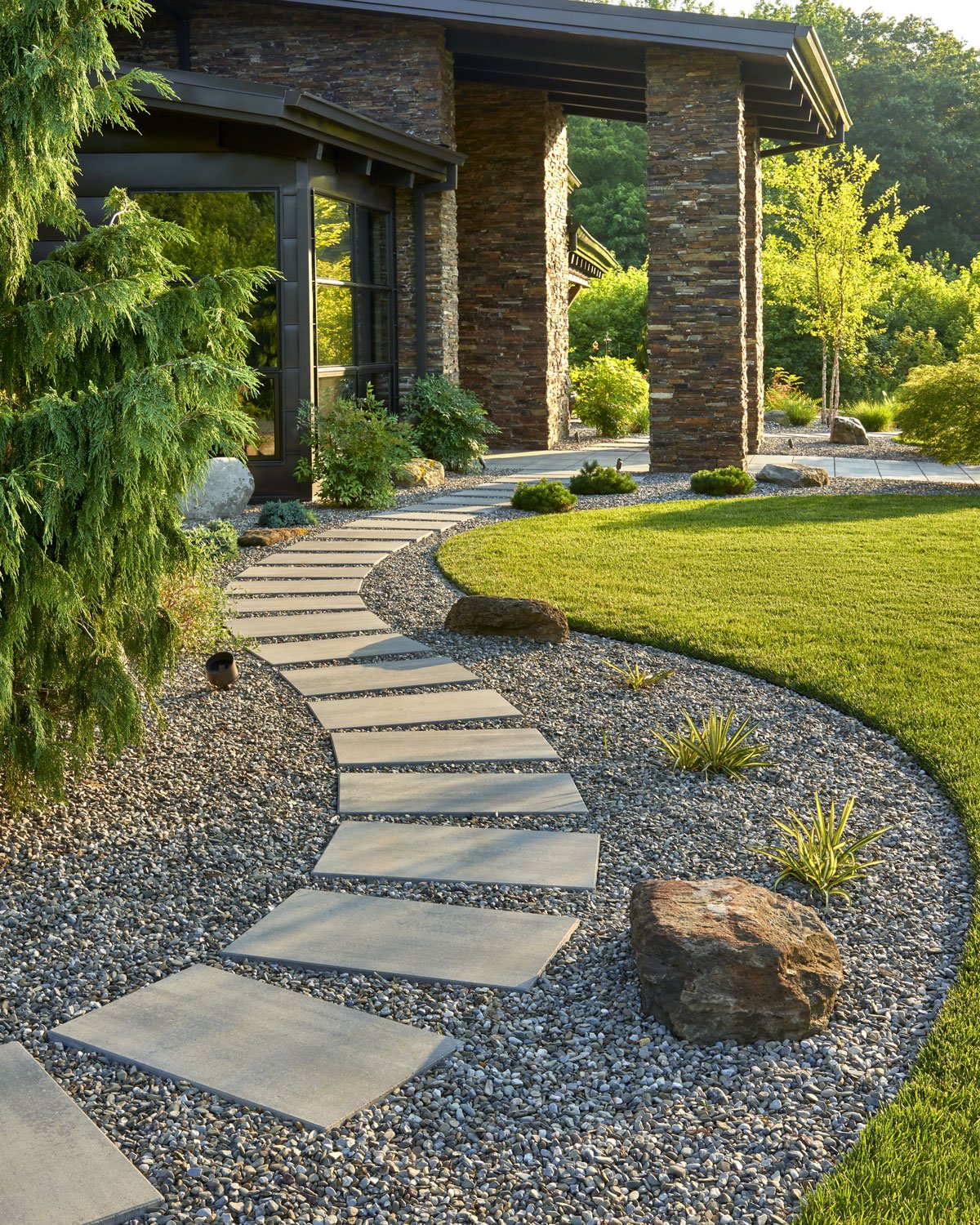
Stepping stones are an easy and affordable way to create a whimsical garden pathway. Ideal for smaller spaces, stepping stones allow you to design a path that fits your garden’s shape and size. You can place the stones irregularly for a more relaxed, natural look, or align them neatly for a more structured design.
Stepping stones come in various materials, such as concrete, stone, or even recycled materials like old tiles or wood slices. This gives you plenty of room for creativity when designing your garden path. Adding ground cover like moss or creeping jenny around the stones can help tie the path into the surrounding greenery.
5. Concrete Pavers Pathway
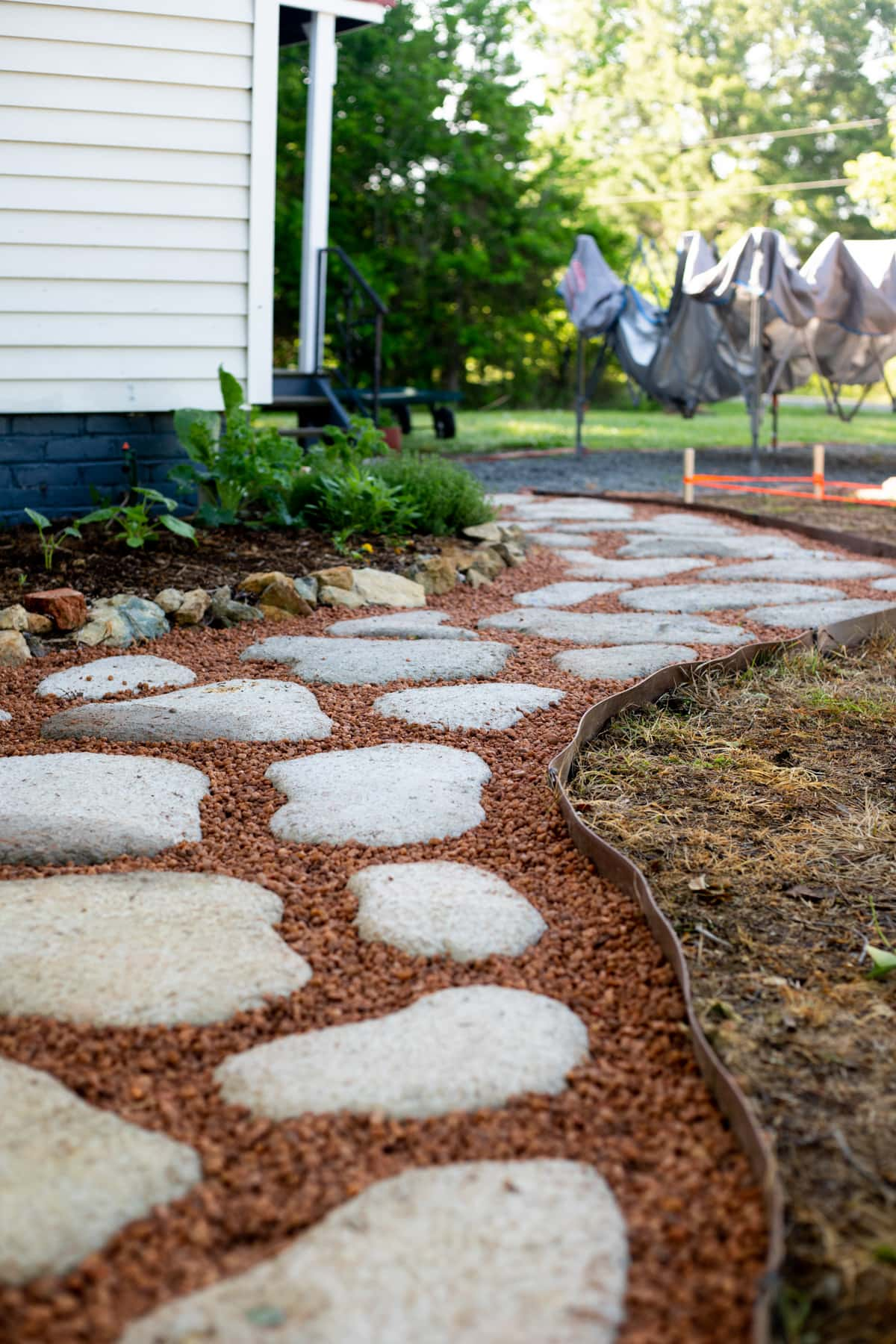
Concrete pavers are an excellent choice for creating a sleek, modern garden pathway. They come in a variety of shapes and sizes, allowing you to customize the look of your path to suit your taste. Concrete is also highly durable, ensuring that your path will last for many years with little upkeep.
Pavers can be laid in various patterns, from simple grids to intricate designs. You can choose to leave spaces between the pavers and fill them with gravel or ground cover for a softer, more organic look. If you’re looking for a modern, clean aesthetic, concrete pavers are a perfect option.
6. Mulch Pathway
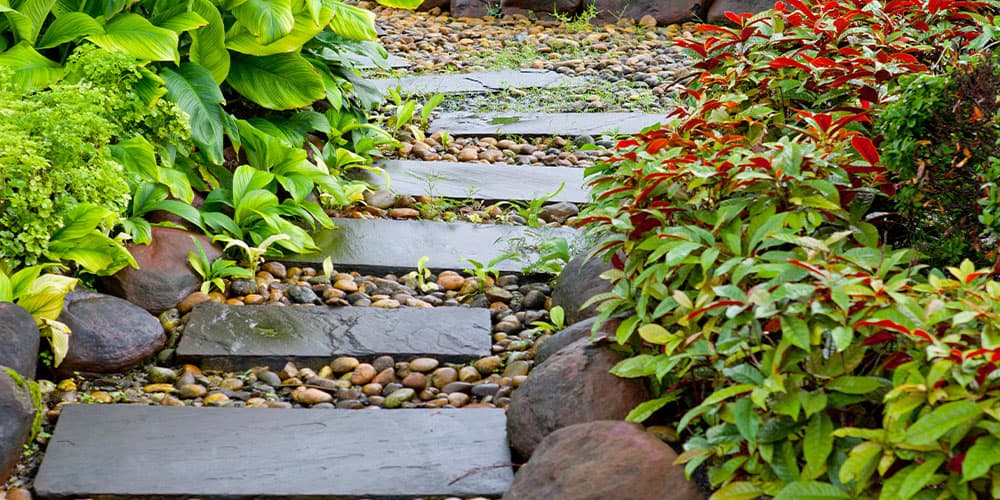
If you’re aiming for a natural and rustic look, a mulch pathway is a great option. Made from organic materials like wood chips, bark, or straw, mulch creates a soft, earthy surface that blends seamlessly into your garden. Mulch pathways are also beneficial for the soil, as they help retain moisture and suppress weeds.
To create a mulch path, simply define the edges with stone or brick and spread a layer of mulch over the surface. You can choose from various types of mulch, such as cedar, pine, or hardwood, depending on your preferred look and scent. This pathway is an affordable and eco-friendly option for garden lovers.
7. Wooden Boardwalk

For a coastal or rustic vibe, a wooden boardwalk is an excellent addition to any garden. This pathway type is perfect for areas with a lot of moisture, like boggy soil or ponds. It can also add a touch of charm to larger gardens, connecting different sections of your outdoor space with a natural, serene feel.
To create a wooden boardwalk, you can use pressure-treated lumber or cedar to ensure durability. The wood can be left to weather naturally or stained for a richer look. Adding small lanterns or plants along the edges of the boardwalk can enhance its visual appeal.
8. Pebble Mosaic Pathway

If you’re looking to create a truly unique and artistic garden path, a pebble mosaic pathway may be the perfect solution. This type of path involves arranging small pebbles or stones in intricate patterns or designs, creating a beautiful, custom-made surface.
Pebble mosaics can be designed in various patterns, from geometric shapes to floral motifs, depending on your style. Installing a pebble mosaic requires some patience, as you’ll need to lay the stones carefully and ensure the design is consistent. However, the result is a stunning, one-of-a-kind pathway that will surely be the focal point of your garden.
9. Sand and Gravel Pathway
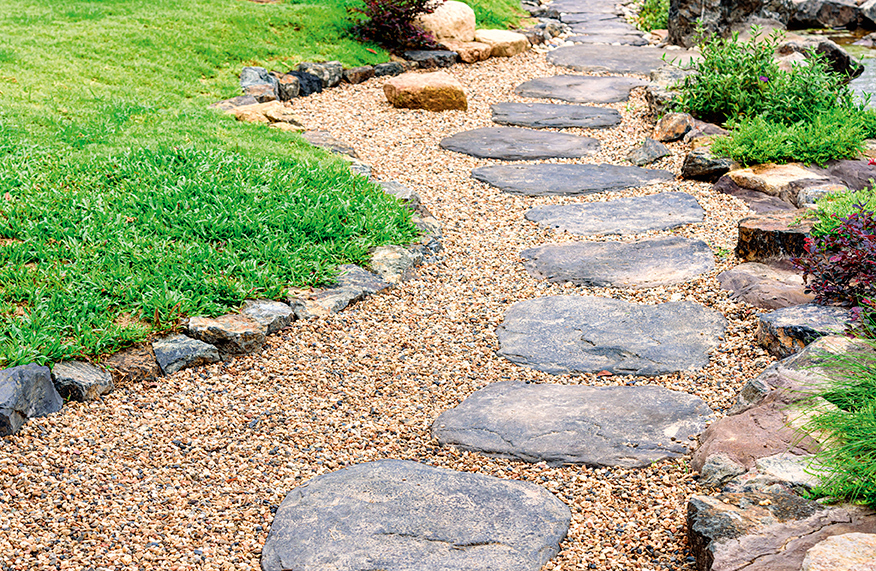
A combination of sand and gravel creates a rustic yet refined pathway that blends effortlessly into any garden. The sand offers a smooth, stable surface while the gravel adds texture and interest. This type of path is ideal for gardens with a relaxed, bohemian aesthetic.
To install a sand and gravel pathway, start by laying a base layer of sand, followed by a layer of gravel. You can add a border of bricks, stones, or wood to keep the materials in place and create a defined edge. This type of path works well in desert or Mediterranean-inspired gardens, where the materials match the natural surroundings.
10. Crushed Stone Pathway
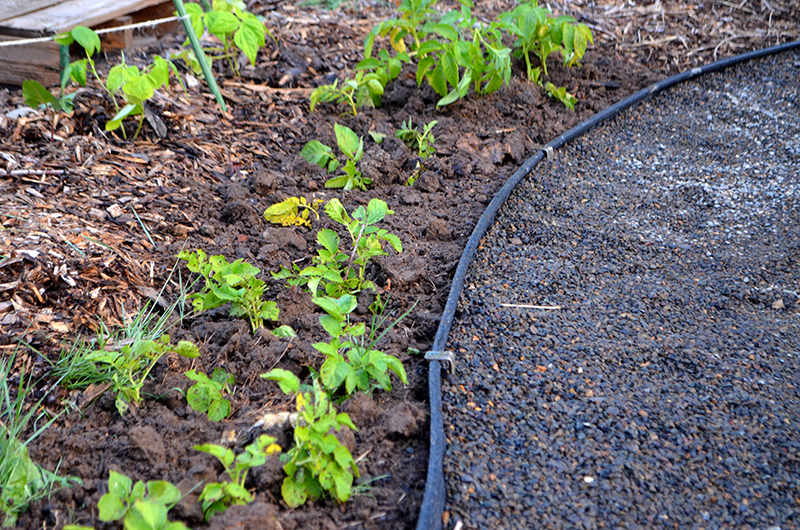
Crushed stone is another fantastic option for creating a textured, natural garden path. It’s similar to gravel but has smaller, more angular particles, which can create a smoother surface for walking. Crushed stone pathways are ideal for homeowners who want an easy-to-maintain path with a rugged, earthy charm.
You can choose from a variety of crushed stone options, including limestone, granite, or basalt, depending on the look you want to achieve. Laying a crushed stone path involves placing the material over a fabric liner to prevent weeds, ensuring the path stays neat and tidy.
11. Mosaic Tile Pathway

For those seeking a bold and artistic touch in their garden, a mosaic tile pathway offers endless possibilities. You can use vibrant, colorful tiles or opt for neutral tones to create a sophisticated design. The tiles can be arranged in geometric patterns, floral motifs, or abstract art, allowing you to customize the pathway to reflect your personal style.
Creating a mosaic tile pathway involves carefully arranging the tiles on a bed of mortar or concrete, ensuring each piece is securely placed. The grout between the tiles can be filled with sand or a contrasting color for added visual interest. This type of pathway works especially well in formal gardens or spaces where you want to make a statement with a unique design.
12. Lawn Pathway
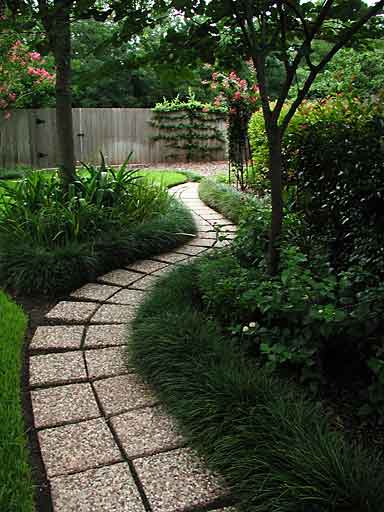
A lawn pathway is the perfect solution for those looking for a soft and natural feel in their garden. This pathway type blends seamlessly with the surrounding greenery, creating a smooth and organic path. Lawn pathways are simple to create, and the natural grass will eventually fill in the gaps, giving the path a lush, inviting look.
To create a lawn path, simply define the edges with low-maintenance edging materials like bricks, stones, or timber. The path should be mowed regularly to maintain its neat appearance. For an added touch, you can plant flowers or herbs along the edges, giving the pathway a more colorful and fragrant vibe.
13. Slate Pathway

Slate is a versatile and attractive material that brings a refined, natural look to any garden. Its dark, rich tones add depth and sophistication, making it an ideal choice for modern or minimalist garden designs. A slate pathway can create a sleek and timeless look while offering durability and low maintenance.
Slate tiles can be arranged in a variety of patterns, from linear to more random configurations, depending on your preferred style. They can also be laid on top of sand or mortar for a stable surface. Slate pathways are perfect for contemporary gardens or those with an emphasis on earthy, natural materials.
14. River Rock Pathway

For a more rustic and organic look, a river rock pathway is a great option. The smooth, rounded stones mimic the natural flow of water, making them a beautiful addition to any garden that emphasizes natural elements. River rock is highly durable and offers excellent drainage, making it a practical choice for gardens in wet areas.
To create a river rock pathway, start by laying down a weed barrier fabric, followed by a layer of river rock. You can use larger rocks along the edges to form a border and smaller stones for the path itself. This type of pathway works particularly well in Zen gardens, woodland settings, or areas with a more natural landscape.
15. Cobblestone Pathway

Cobblestones evoke a sense of old-world charm, making them an ideal choice for garden paths in traditional or rustic gardens. Their textured surface provides a stable walking area while also creating an elegant and timeless aesthetic. Cobblestones can be arranged in various patterns, allowing for plenty of design flexibility.
To create a cobblestone pathway, arrange the stones in a simple grid pattern or opt for a more intricate design. Mortar or sand can be used to fill the gaps between the cobbles, depending on the desired look. Whether you’re aiming for a cottage-style garden or a more formal outdoor setting, cobblestones provide a durable and eye-catching solution.
16. Wood Chip Pathway
:strip_icc():format(webp)/wood-chip-path-e9b37302-47af4a8cf4ac498481455b75e1c3c448.jpg)
A wood chip pathway is a simple, eco-friendly option that works beautifully in informal gardens. The soft texture and earthy tones of wood chips create a comfortable and inviting path that blends in with the surrounding plants and flowers. This type of pathway is ideal for woodland gardens, country-style settings, or places where you want a more natural, rustic feel.
To create a wood chip pathway, spread a thick layer of wood chips or bark over the surface and define the edges with stones, bricks, or timber. Wood chips are biodegradable, so this pathway type is an environmentally friendly choice. Over time, the chips will break down and enrich the soil, making this a sustainable option for your garden.
17. Terracotta Pathway

For a Mediterranean-inspired garden, a terracotta pathway brings warmth and color to your outdoor space. The rich, reddish-orange tones of terracotta tiles or pavers complement sun-drenched gardens and pair beautifully with bougainvillea, lavender, and other Mediterranean plants. This pathway type can evoke a rustic, charming vibe that transforms your garden into a tranquil retreat.
Terracotta pavers can be laid in a linear or staggered pattern, depending on the look you’re going for. Consider adding plants or flowers along the edges to enhance the warm, inviting atmosphere. Over time, terracotta will weather gracefully, adding to its natural appeal.
Conclusion
Garden pathways not only serve a functional purpose but also enhance the beauty and atmosphere of your outdoor space. From rustic gravel and flagstone to artistic mosaics and modern pavers, there is a garden pathway idea to suit every style and garden design. Whether you’re looking to create a natural, serene path that blends seamlessly with your greenery or a bold statement piece that commands attention, these 17 pathway ideas offer endless possibilities for transforming your garden.
Take the time to consider the layout, materials, and overall aesthetic of your garden when choosing a pathway. Whether you prioritize durability, style, or maintenance, there’s a pathway option that will meet your needs and add a touch of elegance to your outdoor living area. By incorporating one or more of these creative ideas, you’ll elevate your garden and create an inviting space for relaxation and enjoyment. Happy gardening!


